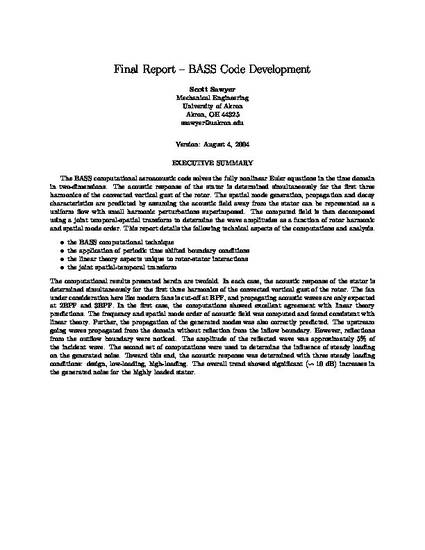
The BASS computational aeroacoustic code solves the fully nonlinear Euler equations in the time domain in two-dimensions. The acoustic response of the stator is determined simultaneously for the first three harmonics of the convected vortical gust of the rotor. The spatial mode generation, propagation and decay characteristics are predicted by assuming the acoustic field away from the stator can be represented as a uniform flow with small harmonic perturbations superimposed. The computed field is then decomposed using a joint temporal-spatial transform to determine the wave amplitudes as a function of rotor harmonic and spatial mode order. This report details the following technical aspects of the computations and analysis. 1) the BASS computational technique; 2) the application of periodic time shifted boundary conditions; 3) the linear theory aspects unique to rotor-stator interactions; and 4) the joint spatial-temporal transform. The computational results presented herein are twofold. In each case, the acoustic response of the stator is determined simultaneously for the first three harmonics of the convected vortical gust of the rotor. The fan under consideration here like modern fans is cut-off at +, and propagating acoustic waves are only expected at 2BPF and 3BPF. In the first case, the computations showed excellent agreement with linear theory predictions. The frequency and spatial mode order of acoustic field was computed and found consistent with linear theory. Further, the propagation of the generated modes was also correctly predicted. The upstream going waves propagated from the domain without reflection from the in ow boundary. However, reflections from the out ow boundary were noticed. The amplitude of the reflected wave was approximately 5% of the incident wave. The second set of computations were used to determine the influence of steady loading on the generated noise. Toward this end, the acoustic response was determined with three steady loading conditions: design, low-loading, high-loading. The overall trend showed significant (approximately 10 dB) increases in the generated noise for the highly loaded stator.
Available at: http://works.bepress.com/scott_sawyer/11/
